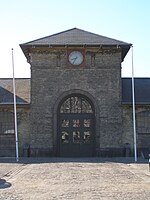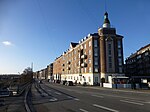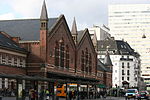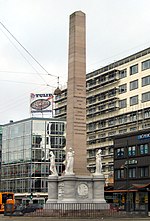Rysensteen Gymnasium

Rysensteen Gymnasium is a gymnasium (upper secondary school) in Copenhagen, Denmark The school was established in 1881 as Laura Engelhardts Skole ("Laura Engelhardt's School") at Stormgade 16. In 1895 the school was moved to Rysensteensgade 3, and after being taken over by the Copenhagen Municipality renamed Rysensteen Gymnasium. In 1932 the school moved to Tietensgade. Around the turn of the millennium the school got new classrooms in The Brown Kødby old stables, for the subjects geography, visual arts, chemistry, biology and physics. In 2002 the main building was renovated, and in 2003 a new music room was built. In 2011 the School chose to rent additional classrooms in The White Kødby because of space constraints, the classrooms are located 7-8 minutes by foot, from the school's main building.
Excerpt from the Wikipedia article Rysensteen Gymnasium (License: CC BY-SA 3.0, Authors, Images).Rysensteen Gymnasium
Tietgensgade, Copenhagen Vesterbro
Geographical coordinates (GPS) Address Website External links Nearby Places Show on map
Geographical coordinates (GPS)
| Latitude | Longitude |
|---|---|
| N 55.670211111111 ° | E 12.563091666667 ° |
Address
Rysensteen Gymnasium
Tietgensgade
1703 Copenhagen, Vesterbro
Capital Region of Denmark, Denmark
Open on Google Maps









